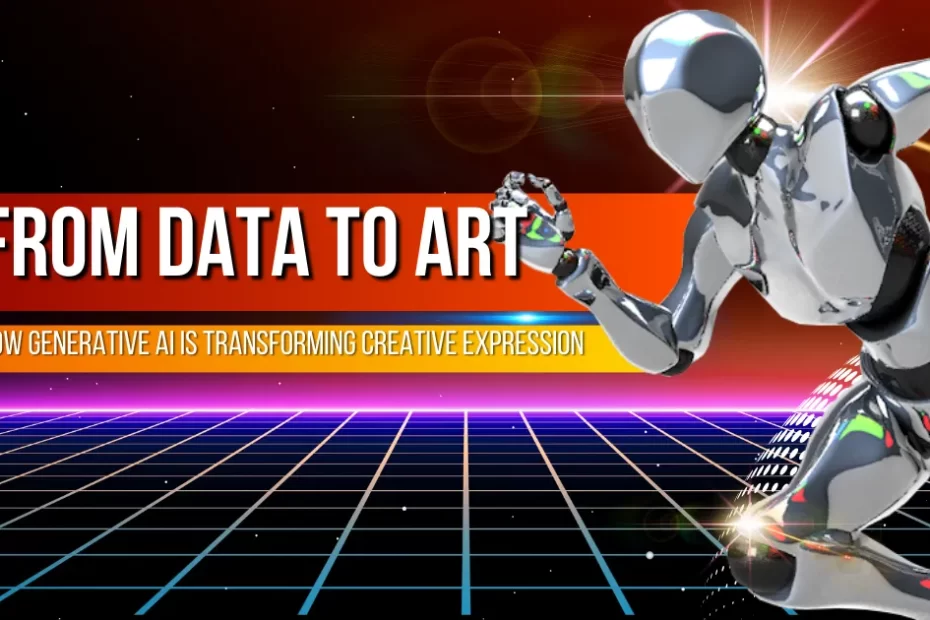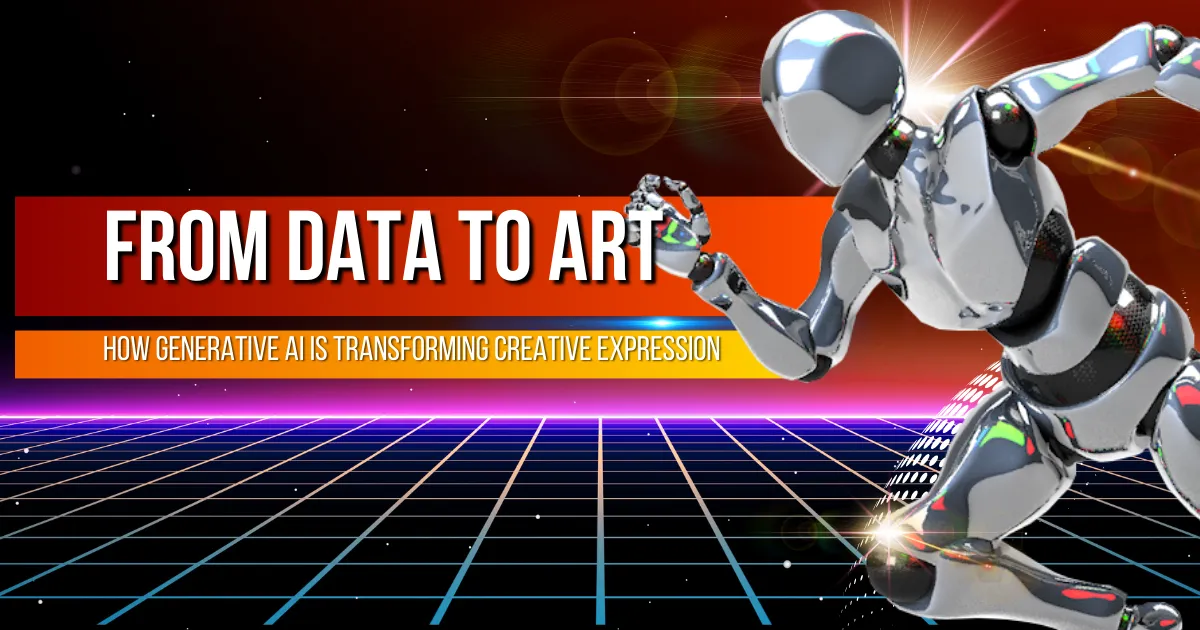Last updated on March 13th, 2024 at 02:20 pm
Generative AI (“G-IA“), a subset of artificial intelligence, is revolutionizing creativity by enabling machines to produce original data.
How Generative AI Works
Generative AI leverages advanced algorithms like Generative Adversarial Networks (GANs) and Variational Autoencoders (VAEs) to create new and original data. These algorithms learn from a vast amount of training data to understand the underlying distribution and patterns within it. Once the model is trained, it can generate new data samples that resemble the training data.
GANs consist of two neural networks – a generator and a discriminator – that compete against each other. The generator creates new samples, while the discriminator tries to distinguish between real and generated data. Through this adversarial process, the generator continuously improves its ability to produce more realistic data.
VAEs, on the other hand, learn to encode data into a compact representation called a latent space. This latent space can then be used to generate new data by sampling from it and decoding the samples back into the original data format.
- Utilizes advanced algorithms like GANs and VAEs.
- Learns the distribution of training data.
- Generates new samples matching the learned distribution.
Creative Applications of G-AI
G-AI has brought about a plethora of creative applications across various domains:
Image Generation: Generative AI can produce high-quality images from scratch, opening up possibilities for digital art, graphic design, and visual storytelling.
Music Composition: By learning from vast music datasets, generative AI can compose original melodies and harmonies, inspiring musicians and composers with new creative ideas.
Text Generation: Generative AI can generate human-like text, from short paragraphs to entire stories, finding applications in content creation, chatbots, and creative writing.
Video Creation: With the ability to generate realistic video frames, generative AI is transforming special effects in movies, gaming, and virtual reality experiences.
Ethical Considerations
- Deepfakes: Concerns about realistic fake content.
- Misinformation: Addressing potential issues with authenticity.
- Responsible Usage: Ensuring ethical application of generative AI.
How has generative AI impacted the creative industry?
Generative AI has had a significant impact on the creative industry in several ways. Here are a few examples:
New forms of art: G-AI has enabled the creation of new forms of art that were previously impossible or difficult to achieve. Artists can use generative algorithms to create unique and complex visual and audio pieces that can be interactive, responsive, and adaptive to their environment.
Enhanced creativity: G-AI tools can serve as a source of inspiration for artists, designers, and writers, generating new ideas and possibilities that they may not have considered before. This can help to enhance their creativity and push the boundaries of what’s possible.
Streamlined workflows: This can help streamline workflows by automating repetitive or time-consuming tasks. For example, generative algorithms can be used to create variations of a design or layout, reducing the need for manual adjustments and saving time for artists and designers.
Personalization: This can be used to create personalized content for individual users, such as customized ads or recommendations based on their interests and preferences. This can help to improve user engagement and create a more personalized experience.
New business models: Generative AI has also enabled the development of new business models in the creative industry. For example, some companies are using generative algorithms to create unique fashion designs or artwork that can be sold as limited-edition products. These products can be customized to the customer’s preferences and are often highly sought after due to their uniqueness and exclusivity. This has opened up new revenue streams for artists and designers and has helped create a more personalized experience for consumers. Additionally, G-AI can be used to analyze market trends and consumer preferences to inform the creation of new products, helping businesses to stay ahead of the curve and meet the changing demands of their customers.
Overall, generative AI has opened up new possibilities for creativity and innovation in the creative industry, allowing artists, designers, and writers to explore new forms of expression and push the boundaries of what’s possible.
Generative AI and Marketing Services
Generative AI opens doors to unprecedented creativity, shaping a future where machines and humans collaborate to bring innovative and imaginative ideas to life.
- AI, including generative AI, is transforming the marketing industry by enabling marketers to automate and optimize various processes, gain deeper insights into consumer behavior, and deliver more personalized and engaging content.
- Generative AI, a subset of AI that focuses on creating new content, is particularly powerful in marketing as it can generate images, text, videos, and other media assets that resonate with target audiences.
- Creativity and Content Generation: G-AI can produce high-quality content, such as images, videos, and written material, at scale and with minimal human intervention.
- Personalization: G-AI algorithms can analyze vast amounts of data to understand individual preferences and behaviors, allowing marketers to deliver personalized content tailored to specific audience segments.
- Efficiency and Cost-Effectiveness: By automating content creation processes, generative AI helps marketers save time and resources while maintaining quality and consistency.
- Innovation and Differentiation: Generative AI enables marketers to experiment with novel content formats and creative ideas, helping brands stand out in a crowded marketplace.
- Nike’s “Create with Air Max” campaign utilized generative AI to allow customers to design their own custom sneakers using an interactive online tool.
- Coca-Cola used generative AI to create personalized packaging designs for its “Share a Coke” campaign, featuring individual names and messages.
- The New York Times employed generative AI to automate the creation of personalized newsletters, delivering curated content based on readers’ interests and preferences.
- Continued Innovation: Advances in generative AI techniques, such as deep learning and reinforcement learning, will enable marketers to create even more sophisticated and compelling content.
- Seamless Integration: Generative AI tools will become more user-friendly and accessible, allowing marketers with limited technical expertise to harness the power of AI in their campaigns.
- Ethical Considerations: As AI technology evolves, marketers will need to address ethical concerns and regulatory requirements surrounding data privacy, transparency, and fairness in AI-driven marketing practices.

